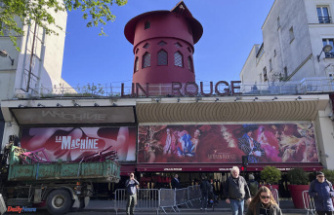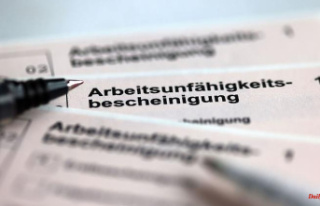Attention, deceptive packaging: In order to conceal price increases, food manufacturers are increasingly reaching into their bag of tricks. More and more packaging is becoming smaller - at the same price. Consumer advocates fear that the peak is yet to come.
Consumer advocates are observing a growing number of hidden price increases for groceries and everyday goods. More and more often, people complained to the Hamburg consumer center about shrinking package sizes while prices remained the same or even increased, said the food expert at the consumer center, Armin Valet. Numerous products are affected, from margarine to confectionery to frozen pizza.
Valet has been observing for years how manufacturers and retailers use pack sizes to disguise price increases and chooses a deceptive pack of the year every twelve months. At the moment there are a lot of complaints about such tricks at the Hamburg consumer center, said Valet.
The background is clear: food prices are currently rising dramatically. According to the Federal Statistical Office, food and non-alcoholic beverages were 14 percent more expensive in July than a year earlier. Increased raw material prices are just as noticeable here as higher energy costs or additional expenses for logistics as a result of the corona pandemic and the Ukraine war.
There is a great temptation for manufacturers and retailers to hide the price increase. If the pack shrinks a bit, it's often less noticeable than if the price goes up. There's even a word for it: "shrinkflation" - a combination of the English word for shrink and inflation.
"We will see this more often in the future than in the past," says marketing expert Martin Fassnacht from the WHU business school in Düsseldorf. The reason: retailers and manufacturers were reluctant to exceed the usual price thresholds, such as 1.99 euros. "If such a threshold is exceeded, a product suddenly appears significantly more expensive and there is a risk that the sales volume will collapse drastically," says Fassnacht, describing the problem.
The expert certainly understands this practice. However, he believes that manufacturers should then play their cards openly towards consumers. "For reasons of fairness, it is important that the manufacturers also reduce the packaging when they reduce quantities." Then they could certainly hope for understanding from consumers. "Some people may also be happy not to have to pay more because of the reduction in volume."
There are currently plenty of examples of such "shrinkage cures". Haribo, for example, recently reduced its gold bear bag from 200 to 175 grams. The recommended price of 0.99 cents remained the same - despite 12.5 percent less content. "As a company, since the beginning of the year we have been confronted with extraordinarily rising costs for high-quality ingredients, but also for foils, packaging materials, cardboard boxes as well as energy and logistics in the high double-digit range," said Haribo, explaining the step. The company is adjusting packaging sizes and price to remain affordable.
"It was important to us that we no longer have 'air' in the bag, i.e. keeping the size of the bag, but also making the bag visibly smaller," emphasized a company spokesman. As a result, the reduction in the filling quantity is clearly recognizable to customers.
Brand manufacturer Henkel also took a similar approach with its fabric softener Vernel. "Since we were not able to fully absorb the cost increases in some cases, we have decided to partially adjust the filling quantities of our products," the company reported. The snacks manufacturer Intersnack was also forced to "adjust the filling quantity of the ültje peanuts" due to the increase in costs. But consumer advocates have also encountered shrinking package contents for jam, margarine, crisps and even frozen pizza in recent weeks.
That's not forbidden, admits Valet. But of course it is a trick at the expense of the customers. According to him, it is striking that supermarkets and discounters are increasingly resorting to such hidden price increases for their own brands. This has been a rarity in the past.
According to the Hamburg consumer advice center, the frequency of so-called double price increases on the association's list of deceptive packaging has also increased. This means products in which not only the filling quantity has been reduced, but the price has also been increased by retailers. While this has affected an average of 18 percent of the articles recorded in the past two years, it was already around 35 percent in the first half of 2022.
For the time being, consumer advocate Valet does not expect an end to the culture of shrinkage for everyday products. On the contrary: the peak could be yet to come. He calculates that retailers need about six months in advance to change the labels and sell off the old goods. "I think there's still a lot to come."
The VZHH offers the opportunity to draw attention to products that are used to deceive customers. She then makes these products public and chooses them the deceptive pack of the month and of the year.












